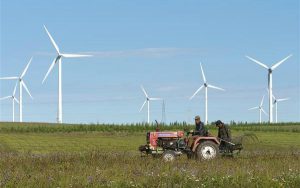As the ink dries during the Asian Infrastructure Investment Bank (AIIB) signing ceremony in Beijing, this institution is set to be ‘the’ hot topic in international finance. At the outset it has ruffled feathers within the US administration and been somewhat of an opaque entity. And even though this bank has the potential to radically alter international politics and climate stability, very little is known about how its founding members will make decisions over the next year.
The AIIB is both a direct response to the lack of progress inside the Bretton Woods Institutions in reforming their governance to reflect a changing balance of power, as well as an acknowledgement of the overwhelming demand from many countries for much needed sources of infrastructure financing.
According to the latest reports, the China-led bank will be operational by the end of this year. No mean feat for an institution designed to engineer the future direction of the global economy. With over 50 countries now signed up it is truly a global financial institution. It is likely to echo China’s “One Belt, One Road” policy, and the AIIB states investments will focus primarily on energy, power, transport, telecom, agriculture, water supply, health, environmental protection, urban development and logistics.
As China’s first foray into fashioning a multilateral institution, the AIIB has been subject to fairly intense media oversight and it poses some reputational risks for China in the speed of its establishment as well as its decisions on what to fund. Many observers will look at how it incorporates environmental and social safeguards into its projects. But what macro risks are the bank’s founding members prepared to take and be exposed to?
See also: Pressure mounts on AIIB for greater clarity on green lending
Lean, clean and green?
They will be investing in complex projects, in even more complex geographies. As China’s own domestic economic reforms begin to integrate more sophisticated risk assessments into their decision making, these could well be echoed in their new international financial institutions. As climate impacts increase and development objectives are met, the availability of resources will become more challenging. Asia is one of the most vulnerable regions to climate and resource scarcity. The good news is that the bank’s interim secretary general Jin Liqun has announced that the AIIB will be “Lean is cost effective; clean, this bank will have zero- tolerance on corruption; green means it’s going to promote the economy.”
In common with any investments made over the course of the next 15 years, the AIIB’s lending will determine the future of the world’s climate system. The New Climate Economy Commission has argued that modern economic management incorporates risk into its investment decisions. But of course, it will not only be China and those supporting the AIIB who could instigate such measures. Those countries receiving the funding should also demonstrate the investments they’re proposing are sound, resilient and sustainable. How the AIIB encourages this will be a test of its credibility.
‘Black box’
China could help guide the AIIB to be at the cutting edge of policies and practices to reduce the economic and financial risks to both the lenders and the recipients. The G20 is tasking its Financial Stability Board (FSB) to convene a public-private inquiry into the fall-out faced by the financial sector as climate policies intensify. This builds on the work of the Bank of England which is currently assessing risks across the UK banking sector based on their exposure to investments in fossil fuels. This is pioneering work in the field of the finance, and therefore an important direction for the AIIB to consider.
It’s been a long while since we’ve had such an opportunity to shape the future of financing for infrastructure alongside such fluctuating geopolitics. Despite the AIIB and member state decisions taking place within a metaphorical black box, the AIIB is still very much in play. The AIIB could be at the forefront of a more mutual relationship between countries and learn from the mistakes of the past, striving for a modern approach to economics, incorporating refined risk assessments into its endeavours.







